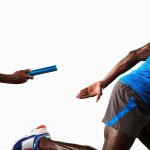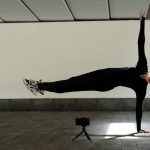Competing in a triathlon is a grueling, yet exhilarating experience. It tests your physical strength, endurance, and mental tenacity. One key aspect often overlooked by triathlon competitors is the power of visualization. Research has shown that mental rehearsal can significantly improve performance in sports and other areas of life. So, how can triathlon competitors leverage these findings to their advantage? Let’s delve into the best pre-race visualization techniques for triathlon competitors.
Harnessing the Power of Visualization
Before we delve into the specifics of visualization techniques, it’s essential to understand what visualization is and how it can impact your performance. Visualization, also known as mental rehearsal, involves creating a mental image of a specific situation or goal. This mental practice can help prepare you for the actual event and improve your performance.
Topic to read : What are the psychological techniques for resilience training in professional judo athletes?
In sports psychology, the use of visualization techniques is widely recognized as an effective approach to enhance athletic performance. These techniques involve mentally simulating an upcoming race, including every detail from the starting line to the finish. By mentally rehearsing the race, triathlon competitors can anticipate potential challenges and devise strategies to overcome them.
Detailed Mental Rehearsal
The more detailed your mental rehearsal, the better. This technique involves imagining the entire race in as much detail as possible. Start by picturing the starting line, envision the crowd, the weather, and the nervous excitement you feel. Then, mentally go through each stage of the race. Visualize how you will transition from swimming to cycling and finally, to running.
Also to discover : How should discus throwers adjust their technique for different wind conditions?
Remember to include the challenges you might face, such as fatigue, a tough opponent, or a difficult part of the race. Also, visualize how you will overcome these obstacles. This technique helps you prepare for the unexpected and build resilience.
Emotive Visualization
Emotive visualization is another effective pre-race technique. This method involves not only visualizing the race but also the feelings associated with it. Imagine the exertion of the swim, the hardness of the bike seat, the pounding of your feet on the pavement during the run. Then, picture the exhilaration and relief as you cross the finish line.
By anticipating the emotions involved, you can better manage them during the race. For instance, if you anticipate feeling anxious at the start, you can practice calming techniques. If you foresee fatigue setting in during the final leg, you can imagine pushing through and finishing strong.
Goal-Oriented Visualization
This technique focuses on the end goal. Instead of visualizing the entire race, you might focus on crossing the finish line in a specific time or achieving a personal best. This method can help enhance your motivation and determination, especially during challenging parts of the race.
Remember, it’s crucial to set realistic and achievable goals. If you set your sights too high, you may end up feeling disappointed and demotivated. So, choose a goal that stretches you, but is still within your reach.
Incorporating Real World Elements
Finally, to make your visualization as realistic as possible, try to incorporate real-world elements. If possible, train in the actual race location to familiarize yourself with the terrain and conditions. If not, you can use photos, videos, or maps to help create a more accurate mental image.
Incorporating real-world elements into your visualization can help reduce uncertainty and increase your confidence. It can also help you fine-tune your strategy as you’ll have a better idea of what to expect.
To conclude, visualization is a powerful tool for triathlon competitors. By mentally rehearsing the race, anticipating challenges and emotions, focusing on your goal, and incorporating real-world elements, you can enhance your performance and increase your chances of success. Remember, like any skill, visualization requires practice. So, start implementing these techniques today and reap the benefits on race day.
The Science Behind Visualization Techniques
The power of visualization lies in how our brain processes these mental images. As far as our brain is concerned, there’s little difference between a vividly imagined experience and a real one. This is because the same neural pathways are activated whether we’re performing an action or merely visualizing it. This principle is the foundation that makes visualization techniques effective.
When athletes visualize their performance, they’re essentially priming their brain for the real thing. This mental rehearsal activates the same neural networks involved in the actual performance. Over time, the repeated activation of these networks can lead to physical changes in the brain, a process known as neuroplasticity. Essentially, your brain becomes better wired to execute the rehearsed actions.
Furthermore, visualization can also impact your emotional state, reducing anxiety and boosting confidence. When you visualize a successful outcome, your brain releases dopamine – a neurotransmitter linked with feelings of pleasure and satisfaction. This release triggers a positive emotional response, reinforcing the neural pathways involved in the visualized performance. Consequently, you feel more confident and less anxious about your upcoming race.
Lastly, visualization aids in the cognitive aspect of performance. It’s a common observation that sports are as much a mental challenge as they are physical. Anticipating potential obstacles and devising strategies are crucial aspects of any race. Visualization allows you to rehearse these situations mentally, thereby improving decision making and reaction time during the actual event.
The Role of Guided Imagery
Guided imagery, a form of visualization, involves using all your senses to create a detailed mental scenario. This method can prove to be exceptionally beneficial as it adds depth to your visualization practice. By involving all your senses – sight, hearing, touch, taste, and smell, you’re creating a multi-sensory experience that further enhances neural activation.
For instance, imagine the refreshing taste of the water as you swim, the sound of your rhythmic breath as you cycle, and the feeling of the pavement beneath your running shoes. The more vividly you can imagine these sensations, the more beneficial the visualization.
Guided imagery can also include motivational aspects. For instance, you may visualize yourself overcoming a challenging part of the race or pushing past fatigue. Imagine the crowd cheering you on and the sense of accomplishment as you cross the finish line. By pairing these positive images with your visualization, you’re reinforcing a positive mental attitude and boosting your motivation.
Conclusion
In conclusion, visualization is a vital tool in a triathlon competitor’s arsenal. It allows you to mentally rehearse the race, anticipate challenges, manage emotions, and stay focused on your goals. Additionally, incorporating real-world elements and guided imagery can make your visualization more realistic and beneficial.
It’s important to remember, however, that while visualization can significantly enhance performance, it’s not a substitute for physical training. The two should go hand in hand for optimal results. So, as you train your body for the grueling demands of a triathlon, don’t forget to train your mind using these visualization techniques. With practice and consistency, you’ll find yourself crossing the finish line faster and more confidently than ever before.











